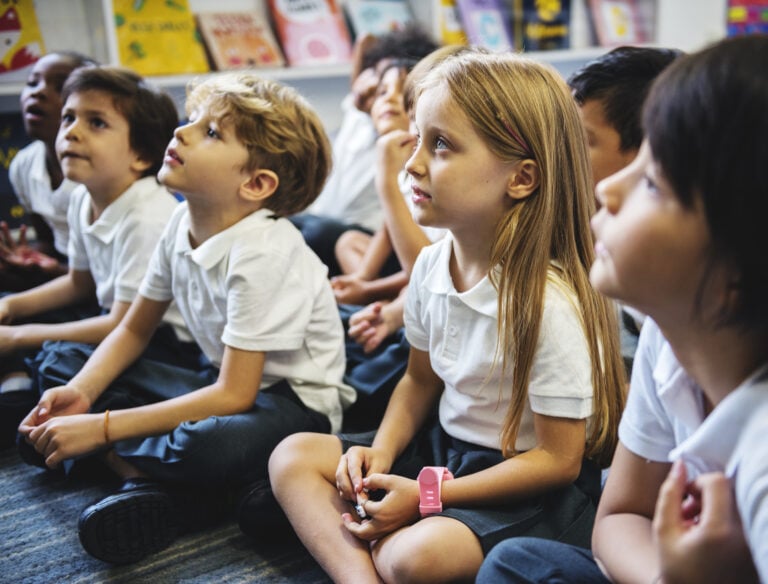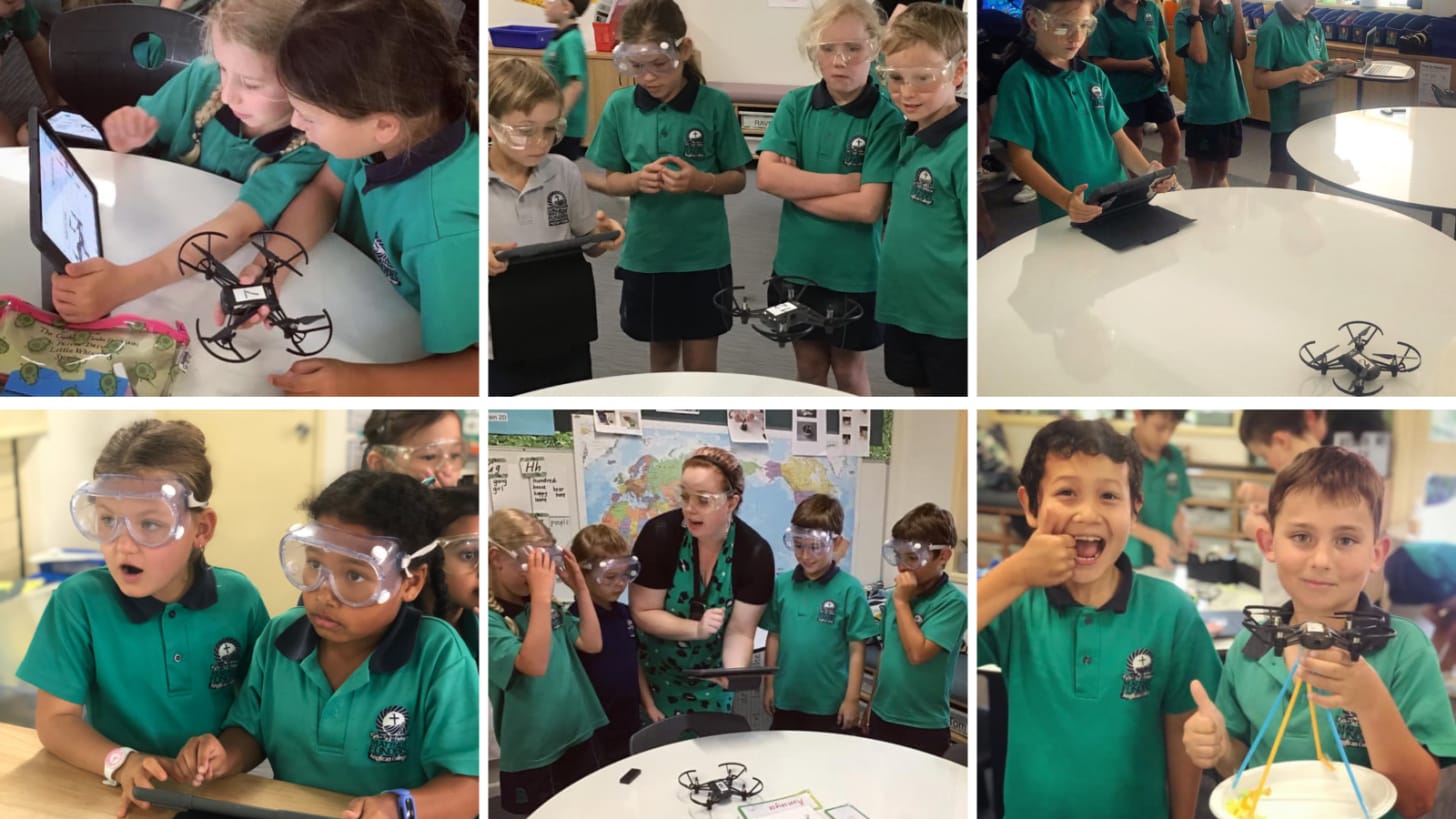Main Menu



Laura is an experienced classroom practitioner and Head of Digital Learning and Innovation at a K-12 independent college. She is a certified Apple Teacher, Microsoft Innovative Educator Expert and Qualified Peer Mentor with experience developing and implementing technology strategy, curriculum and policy. Laura has been nominated for the QCT Excellence in Leadership Award and listed on The Educator Hot List two years in a row.
In my role as a education technology specialist I used to think that using drones in Early Childhood classrooms would be a recipe for disaster. I pictured drones flying in all directions, crashing into walls, children screaming and me cowering under a desk so they didn’t fly into my hair. I did have some mini (Tello) drones at my disposal and despite these feelings, I found myself giving it a go with Year 2 students.
This decision was influenced by the launch of the children’s book Pippa and Dronie. The book tells the story about a little girl who builds a drone and together they explore all the different ways drones are used by scientists and professionals around Australia.
You can watch a reading by the author below:
I particularly enjoy the fact that the characters are all women, working in sciences or working creatively with technology. Something I am very passionate about is developing confidence with technology in girls. Missing out on these experiences in the early years of schooling can mean they do not elect to study these subjects in high school, deviating away from roads that lead to careers in STEM.
We started by linking our learning experiences to the story. In our first week we explored the work of Jessica Culley, a drone photographer from the Sunshine Coast in Australia. Students learnt the drone basics and were limited to launching and landing the drone, taking a selfie with the drone camera while in flight. Following this we learnt about Dr Vanessa Pirotta and how she uses drones to collect whale snot in her work as a marine biologist. Students were fascinated by this and loved recreating the collection of whale snot in the classroom. For this flight, students expanded on their skills, having to manoeuvre the drone to a whale and return back to where they started. We moved through other lessons linking with the book, each lesson increasing the flight complexity. The method of gradually adding objectives proved effective in developing student’s drone skills. They became talented pilots. They even got around to designing their own drones for different purposes.

To prevent my drone nightmares from becoming reality, lessons were run in very controlled environments. The room was sectioned into the flight area and pilot areas with classroom furniture. Tables were used as launch and landing zones. Students were given roles such as pilot, co-pilot, support crew and ground crew. We had cue words such as “drones down”. Finally, all students wore safety glasses. We still had some crazy moments, but these measures went a long way in preventing anything scary.
With the school only minutes from the beach, the students were working on a design thinking unit where they wanted to positively impact the ocean and the wildlife that lives there. They immediately identified rubbish as a problem and worked to identify how rubbish gets into the ocean. It occurred to us that the waterway that flowed through the school grounds connected to the nearby ocean and as many waterways are, could be a vehicle that transports rubbish into the oceans. We pulled out the big drone and used the built in camera to capture this waterway from the sky. We pieced this together with satellite images to discover that our waterway did indeed connect to the ocean.

We needed to let our school community know that their rubbish could end up in the ocean, endangering the animals that lived there. Students used the drone footage to create their own awareness video. They used the Clips app on the iPads to annotate and add in their own persuasive messages. They also created some animations using Keynote which were added to the final video. The results were wonderful.
Recently released, the Dronie App also connects to the storybook and provides an opportunity to explore early coding concepts with these young learners. This not only provided yet another rich layer to the unit, it was a fun way to finish up the term.

You can download the Dronie app from the App Store here.
Laura recently presented at the She Maps annual conference EduDrone. Here is her presentation, which provides you with further information about how she got her early years students flying drones.
If you like this video, then you might also like this article which compares which are the best drones for schools – Drone Education – Tello, Tello EDU, or Tello Talent? or this article Helping Students find fulfilling careers through STEM education.
She Maps is Australia’s leading expert in drone and geospatial education.
She Maps assist schools with the purchasing of drones, school-industry created drone and geospatial teaching resources and highly supportive teacher professional development.
Ready to buy drones for your school? We are an authorised DJI reseller in Australia

Subscribe by email and never miss a blog post or announcement.

She Maps aims to bring much needed diversity and support to STEM. We do this by providing drone and geospatial programs to teachers and schools across the globe.
At She Maps we acknowledge the Traditional Custodians of Country throughout Australia and their connections to land, sea, and community. We pay our respect to their Elders past and present and extend that respect to all Aboriginal and Torres Strait Islander peoples today.
Aboriginal and Torres Strait Islander peoples are advised that this site may contain names, voices, or images of people who have passed away.
Take our resources for a spin and join the thousands of teachers who love our ready-to-teach classroom materials. Try one of our complete units of work for free.

